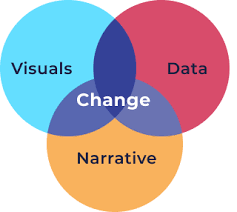Introduction: Mindful eating is more than just paying attention to what you eat. It’s about how you eat, why you eat, and being fully present in the eating experience. In today’s fast-paced world, many of us have lost touch with the true pleasure of eating. We often eat on the go, in front of screens, or out of habit, without really tasting or enjoying our food. Mindful eating is a practice that can help us reconnect with our food, our bodies, and our inner wisdom about what and how much to eat.
What is Mindful Eating? At its core, mindful eating is about bringing mindfulness – the practice of being fully present and aware – to the eating experience. It involves paying attention to the sensory experiences of eating, such as the taste, texture, and smell of food, as well as the thoughts, feelings, and physical sensations that arise before, during, and after eating.
-
- Benefits of Mindful Eating Practicing mindful eating can have numerous benefits for your health and well-being, including:
- Improved digestion: By slowing down and paying attention to your food, you may experience better digestion and reduced digestive issues such as bloating and indigestion.
- Weight management: Mindful eating can help you become more aware of your body’s hunger and fullness cues, making it easier to regulate your food intake and maintain a healthy weight.
- Better food choices: When you’re more mindful of your eating habits, you may find yourself making healthier food choices and being more satisfied with smaller portions.
- Reduced emotional eating: Mindful eating can help you become more aware of your emotions and the reasons behind your eating habits, making it easier to break free from emotional eating patterns.
- Increased enjoyment of food: By savoring each bite and fully experiencing the flavors and textures of your food, you can enhance your enjoyment of eating and feel more satisfied with your meals.
- Benefits of Mindful Eating Practicing mindful eating can have numerous benefits for your health and well-being, including:
Developing Mindful Eating Habits Cultivating mindful eating habits takes time and practice, but it can be a rewarding journey towards a healthier relationship with food. Here are some tips to help you get started:
- Eat slowly: Take your time to chew your food thoroughly and savor each bite. Put your fork down between bites and take a moment to appreciate the flavors and textures of your food.
- Eliminate distractions: Try to eat without distractions such as TV, smartphones, or reading material. Instead, focus on the experience of eating and the sensations in your body.
- Listen to your body: Pay attention to your body’s hunger and fullness cues. Eat when you’re hungry and stop when you’re satisfied, not stuffed.
- Be mindful of emotional eating: Notice if you’re eating in response to emotions such as stress, boredom, or sadness. Find alternative ways to cope with these emotions instead of turning to food.
- Practice gratitude: Before you eat, take a moment to express gratitude for your food. Think about the effort that went into producing and preparing your meal, and the nourishment it provides for your body.

Practicing Gratitude for Your Food One way to cultivate mindfulness in your eating habits is to practice gratitude for your food. This can help you develop a greater appreciation for the food you eat and the effort that went into producing it. Here are some ways to practice gratitude before meals:
- Say a blessing: Before you start eating, take a moment to say a blessing or express gratitude for your food. You can thank the farmers, the cooks, and everyone else involved in bringing the food to your table.
- Mindful eating meditation: Practice a short meditation before meals to cultivate gratitude and mindfulness. Close your eyes, take a few deep breaths, and think about all the people and processes that brought the food to your plate.
- Keep a gratitude journal: Start a gratitude journal where you write down three things you’re grateful for before each meal. This can help you cultivate a more positive and mindful attitude towards your food.
Listening to Your Body’s Hunger Cues One of the key principles of mindful eating is to listen to your body’s hunger and fullness cues. This means eating when you’re hungry and stopping when you’re satisfied, not when your plate is empty or when you’re uncomfortably full. Here are some tips for tuning into your body’s signals:
- Eat when you’re hungry: Pay attention to your body’s hunger signals, such as stomach growling or a feeling of emptiness in your stomach. Eat when you’re hungry, not out of habit or boredom.
- Stop when you’re satisfied: Pause during your meal to check in with your body and assess your level of fullness. Stop eating when you’re satisfied, even if there’s food left on your plate.
- Eat with awareness: Be present and attentive while you’re eating. Notice the flavors, textures, and sensations of each bite, and how your
Mindful Eating vs. Mindless Eating Mindful eating is the opposite of mindless eating, which is characterized by eating quickly, without paying attention to what or how much you’re eating. Mindless eating often leads to overeating and can contribute to weight gain and digestive issues. By contrast, mindful eating encourages you to slow down, pay attention to your food, and be fully present in the eating experience.
Eating with Awareness in a Fast-Paced World In today’s fast-paced world, it can be challenging to find the time and space to eat mindfully. However, with some effort and commitment, you can incorporate mindful eating practices into your daily routine. Here are some tips for eating with awareness in a fast-paced world:
- Set aside time for meals: Try to eat at least one meal a day without distractions. Turn off the TV, put away your phone, and focus on the experience of eating.
- Practice mindful snacking: If you tend to snack mindlessly, try to bring more awareness to your snacking habits. Choose healthy snacks and eat them slowly, savoring each bite.
- Eat with others: If possible, eat with family or friends and engage in conversation during meals. This can help slow down the eating process and make it a more social and enjoyable experience.
Mindful Eating Techniques There are several techniques you can use to practice mindful eating and cultivate a healthier relationship with food:
- Body scan: Before you eat, take a few moments to do a body scan. Notice any tension or discomfort in your body, and take a few deep breaths to relax.
- Savor each bite: As you eat, pay attention to the flavors, textures, and sensations of each bite. Chew slowly and savor the experience of eating.
- Use all your senses: Notice the colors, smells, and sounds of your food, as well as the taste and texture. Engaging all your senses can enhance the eating experience.
P.S.
FREE Resell License allows you to sell our eBooks to as many other people as possible, but also you can set your own price of our eBook and keep all the money.
Discover more from Personal Blog of Richard Tong
Subscribe to get the latest posts sent to your email.






In summary, mindful eating is about enjoying and honoring your food and the many elements of the eating experience. It’s a fulfilling path towards a healthier emotional, physical, and mental relationship with food. Join in, take it one bite at a time, and watch how it positively changes your life!